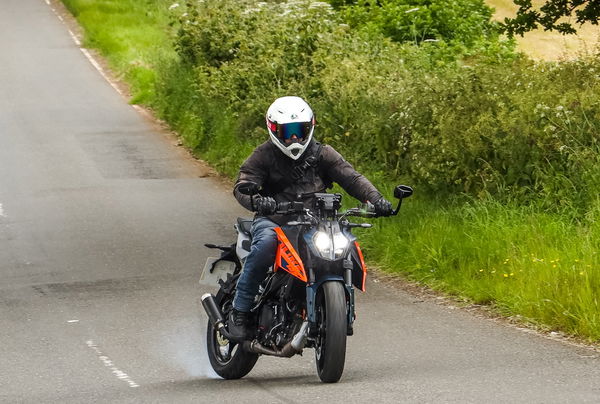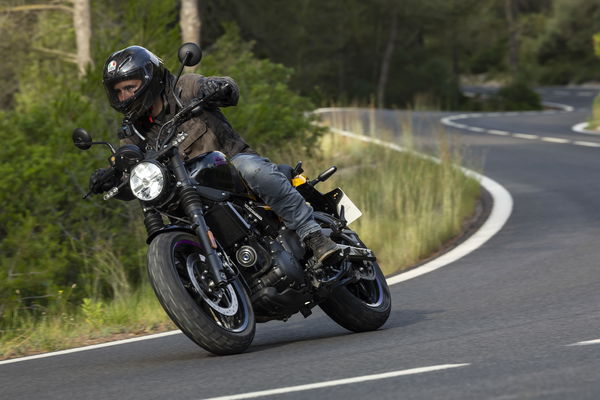Harley-Davidson Freewheeler Review: What’s it Like to Ride a Trike?
We lived with a Harley-Davidson Freewheeler for several weeks, to see what trike life is really like!
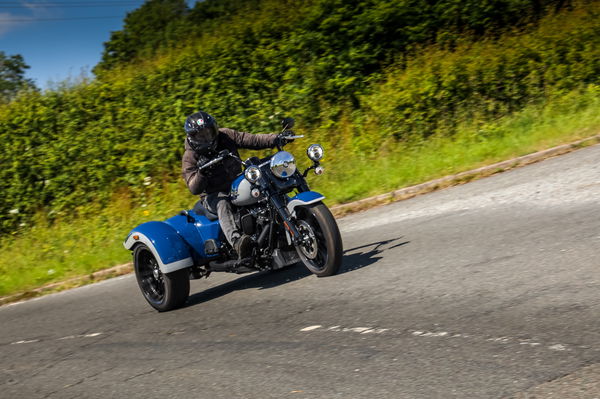
Long ago, I set myself a rule that I’d never take somebody else's word on what a bike or style of motorcycle was like, and as such, have had the chance to test a multitude of weird and wonderful bikes.
One niche within the niche of motorcycling, though, has always alluded me - trikes. I’ve ridden quads, leaning multi-wheel bikes like the Yamaha Niken, and even took a Watsonisan sidecar for as spin once. But the keys to a proper two at the back and one at the front three-wheeler have never crossed my palm - until last week, that is. It’s fair to say that when Harley’s PR team reached out to see if I fancied a go on its custom looking Freewheeler, I swiftly agreed and was ready to make up my own mind as to what they are like to ride.
Once delivered, I had the Freewheeler for around three weeks and covered a surprisingly high 600 miles on the wacky three-wheeler. I bimbled around town on it, popped to see my girlfriend, which included motorway and dual carriageway riding and generally enjoyed the summer sunshine on the eye-catching machine.
How much is a Harley-Davidson Freewheeler?
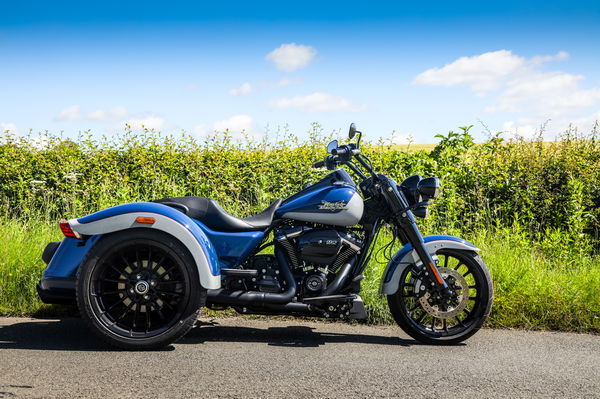
Right, best sit down for this bit, because as you can probably expect, entry into the official H-D trike club ain’t cheap! In the UK the Freewheeler is listed as starting at £31,895. That’s a chunk of change, but if you buy bikes by the pound (lb), it starts to sound better value. The Freewheeler is, though, the cheaper of the two trike options Harley-Davidson officially makes, as its bigger sibling, the Tri Glide (a more full-dress grand American tourer) comes in at an eye-popping - and wallet-crushing - £39,595.
There are three colour options available for 2024, Billiard Gray, Vivid Black (a £500 option), and Alpine Green with Vivid Black, which bungs on another £1,000. The bike I'm riding is a 2023 colour, although there are still some examples in UK dealerships to be found if you want specifically this look.
So, how does that shape up to the rival bikes from other manufacturers? Very well, as it happens, because there aren’t really any big-name motorcycle manufacturers that dabble with two and three-wheeled offerings. The fact that H-D does is a credit to the length and breadth of the American brand’s range.
What is it?
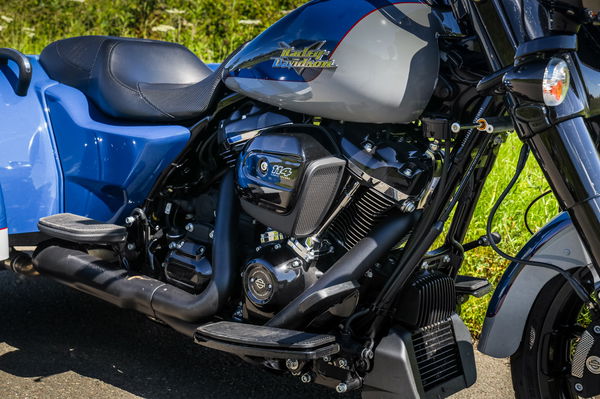
Okay, so one question I got asked a lot while riding was “Is it a kit?” or “Did you build it yourself?”. On both fronts, it’s a no. This is an official Harley product, built in Harley’s own York, PA manufacturing facility.
On a more basic level, the Freewheeler is, to my eyes anyway, a tricked-out and more stripped-back version of the Road King Special, with a shed load of custom parts thrown at it. Power for the bike comes from a 114 Milwaukee Eight V-Twin and it’s delivered to the rear wheels via a six-speed gearbox and belt drive that is topped by a funky differential to keep things pointing in the right direction. In Freewheeler trim it produces a claimed 87bhp at 5,020rpm and a very ample 107lb ft at 3,000rpm.
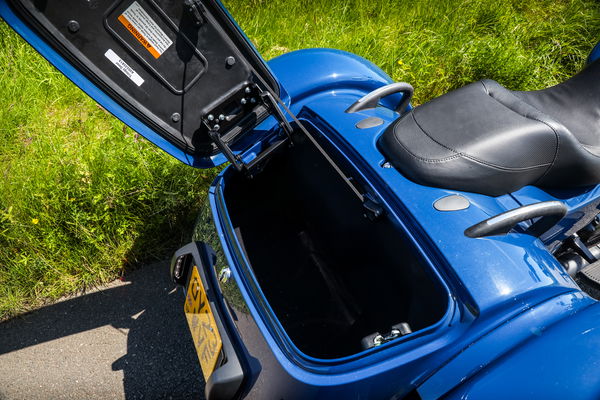
The two rear wheels are attached to a live rear axle (non-independent) and suspended by adjustable coil-over shock absorbers. Braking at the rear is taken care of by disc brakes with an integrated parking brake you operate with your left foot. Between the rear wheels, you have the welcome addition of a 60-litre boot or storage compartment, which is more than enough for a couple of motorcycle helmets or enough clothes and belongings if you go for a long weekend away.
Move forward from there and the bike is just like one of Harley’s other Softail models, and aside from suspension tweaks, the linked brakes, and a humongous steering damper, it’s basically just another Harley.
What’s it like to ride?

I was fairly nervous the first time I took the Freewheeler out thanks to multiple people telling me stories of people forgetting about the rear wheels and filtering, or misjudging a corner and flipping the thing off a kerb. I did my best to put this to the back of my mind, though, and headed out to get my first-ever triking fix.
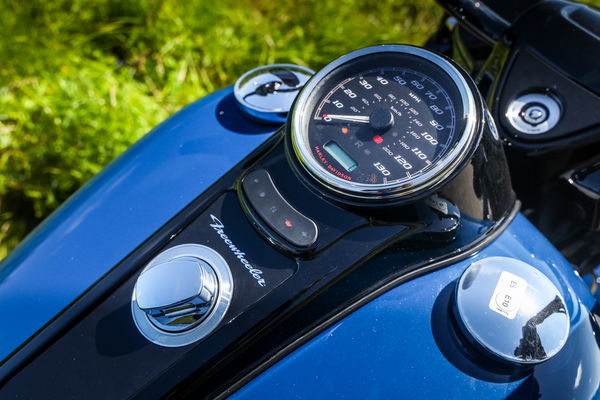
The first thing that struck me was how blooming heavy steering is. Obviously, there’s a lot more weight to the Freewheeler (513kg in running order) and when you add to that the ginormous steering damper, moving the bars at slow speeds takes a big old heave of the wide bars. Once you are on the move though, it’s all very similar to riding a motorcycle. The gears and clutch are identical, and the brakes, which are linked and feature cornering ABS, are all as you’d find on a normal bike. Even the view when riding is just like riding a ‘normal’ Harley, with the 22-litre fuel tank sitting under my chin crowned by those familiar clocks and the bars decked out with Harley’s latest generation of switchgear.
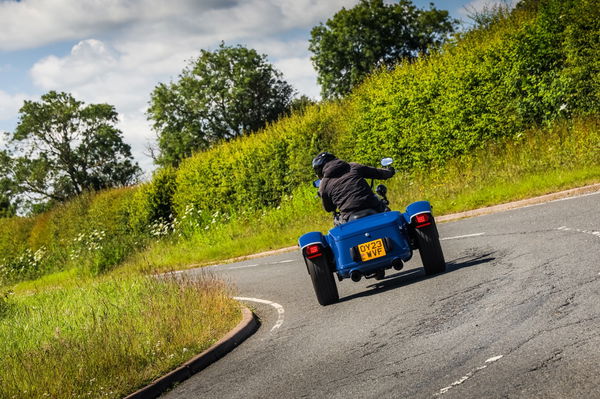
It’s only when you get to a corner that you feel like you are on a trike, and you heave on the bars and instead of rolling gently into a lean, the Freewheeler remains almost completely flat as it makes its way through the turn. Potholes and speed bumps are another reminder that you’ve got three wheels on your wagon, and unlike on a two-wheeler (which can thread its way around bumps in the road), whatever is on the road in front of you will almost certainly end up affecting one of the wheels.
It’s an odd sensation to be riding something that, from the cockpit at least, looks just like a motorcycle, but reacts to bumps in the road in a very different manner. If the front wheel rolls over a speed hump, the telescopic forks will do a decent job of soaking up the movement. It’s a very different matter with the rear wheels, though, and to feel the front and rear ends of the bike reacting completely and at different times does take a bit of getting used to.
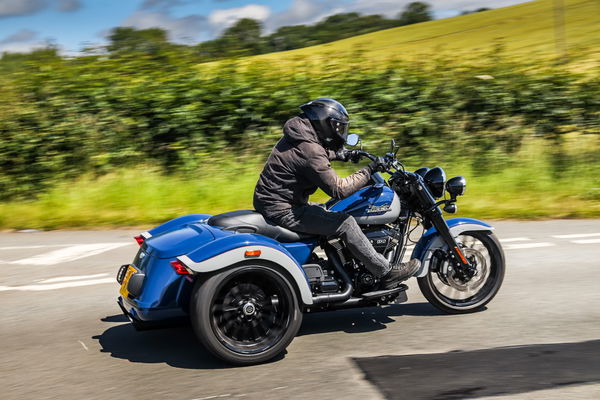
Roads with speed bumps though are not the natural habitat for the Freewheeler, though, and to really get a feel for the handling I did my best to stick to country routes and nice flowing B-roads. Here the trike feels much more at home, and away from the traffic bollards and tight spaces between parked cars to contend with, it feels much more at home.
People seem always to ask about the cornering and specifically how fast it can corner. It’s not a question I can give a definitive answer for, as I was always so petrified of lifting the inside rear wheel, that I never really pushed my luck. I get the feeling that it can corner much quicker than you’d expect, but with the fear of flipping the thing over never far from my thoughts it seems that is the limiting factor. There are also a number of things that can affect cornering performance, including the camber of the road, the quality of the road surface and the body position of the rider. Really, you’re best off just taking things easy.

There is one aspect of the Freewheeler's performance that you can push, though, and that’s its brakes. The front stopper is a vast twin-disc set-up mated to four-pot calipers, and while you need a few fingers on the lever to get the best from them, there is a huge amount of braking power to be found. Likewise, the rear brake is also very strong, and with it working alongside the front brake thanks to the linked system, and with huge amounts of contact area thanks to the rear wheels, the overall performance of the braking system is exceedingly good.
The brakes are backed up by optimised cornering ABS and you can feel the system working mainly on the front wheel, especially if you are grabbing the front brake late with some steering angle applied to the front wheel. It’s almost like a bit of resistance appears in the front brake lever, not like a conventional ABS feeling when you have pressure bleeding out of the lever - in fact, it’s almost totally the opposite.

If there are two things I’ve taken away from my time with the Freewheeler it’s that, firstly, compared to the other multi-wheel machines you can ride - quads, leaning multi-wheel bikes, and sidecar outfits - the trike configuration rides in a completely different way to them all. It’s nowhere as unstable feeling as a quad bike and isn’t affected by acceleration and braking like a sidecar outfit is. It’s also vastly different from a leaning multi-wheel bike, like a Piaggio MP3 of the funky Yamaha Niken, which do feel like two-wheeled motorcycles - up to a point anyway.
The second thing is that to keep it going on the straight and narrow, you have to work a lot more than on a two-wheeler. You control a motorcycle with much more than just the handlebars, and your head, vision, body weight and more help to move the bike from one position on the road to another. On a trike, you only have the handlebars. You can’t countersteer like on a motorcycle, and I also found that if you take your eyes off the road for more than a split second - to check the sat nav or fuel level for instance - you will begin to wander off-line, regardless of how much you concentrate. It’s clear that with all the little sub-conscious steering techniques that I’m used to having at my disposal removed, I’m having to pour all my brain power into using my arms, and that takes a surprising amount of time to get used to.
Is the Harley-Davidson Freewheeler comfortable?
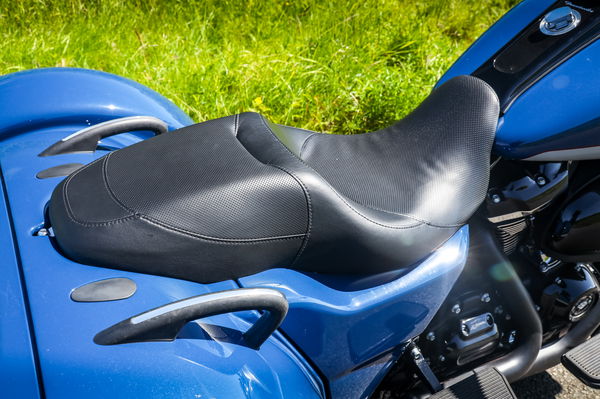
To a point ,yes. I has pretty much the same riding position and ergonomics as found in some other bikes in the Harley range. The running boards are damped to remove any vibration, the bars remain vibe-free at motorway speeds, and the seat is plush and supportive - for the rider at least. There are some jarring aspects to riding it though, and it comes down to having a rear axle that does something totally different to the front end.
The front suspension on a bike is fairly simple stuff - a bump affects the front wheel, compresses the suspension in one direction and then rebounds once the bike is past whatever it was you rode over. On a ‘normal’ motorcycle, the rear suspension would then behave in the same manner once it encounters the same bump. Trikes are different and you do have to become accustomed to feeling the bike roll from one side to the other as lumps and bumps in the road are ridden over. You also have to be aware that if you can see a pothole on the road, you are almost certainly going to hit it with at least one of your wheels, and with a much wider track than a two-wheeled bike, you’re probably better off doing that than trying to avoid hitting it all together.
Should you buy a Harley-Davidson Freewheeler?

Harley-Davidson’s Freewheeler is a machine you will either want in your garage or you won’t. Let’s face it, you don’t commit to a £30k + mechanical purchase without already having put a significant amount of thought into the matter. With that in mind, my opinion on how the Freewheeler handles will probably have little to no bearing on whether you take the tricycle plunge or not.
I can though tell you that it is a very different bike, a very different riding style and a very different world. It isn’t though any less rewarding. You can still do the same things as your biking mates - for the most part anyway - and with the bar and shield on the tank you are still part of the H-D family that means so much to so many people.
Would I buy a Freewheeler if I had £30k burning a hole in my leather chaps? No, I wouldn’t, and it would take a serious life-changing incident to alter that. There are though a number of riders that, for a myriad of reasons, can’t ride a conventional bike, and if the Freewheeler is a vehicle that allows them to continue indulging in their passion and maintaining their physical and mental health - more power to them. I’ll certainly be more appreciative of their choice when I next spot one on the road.
